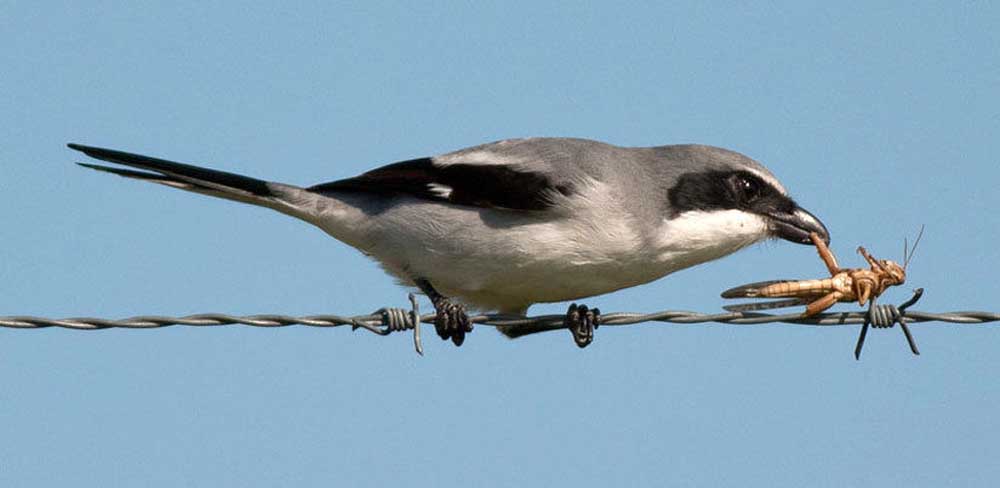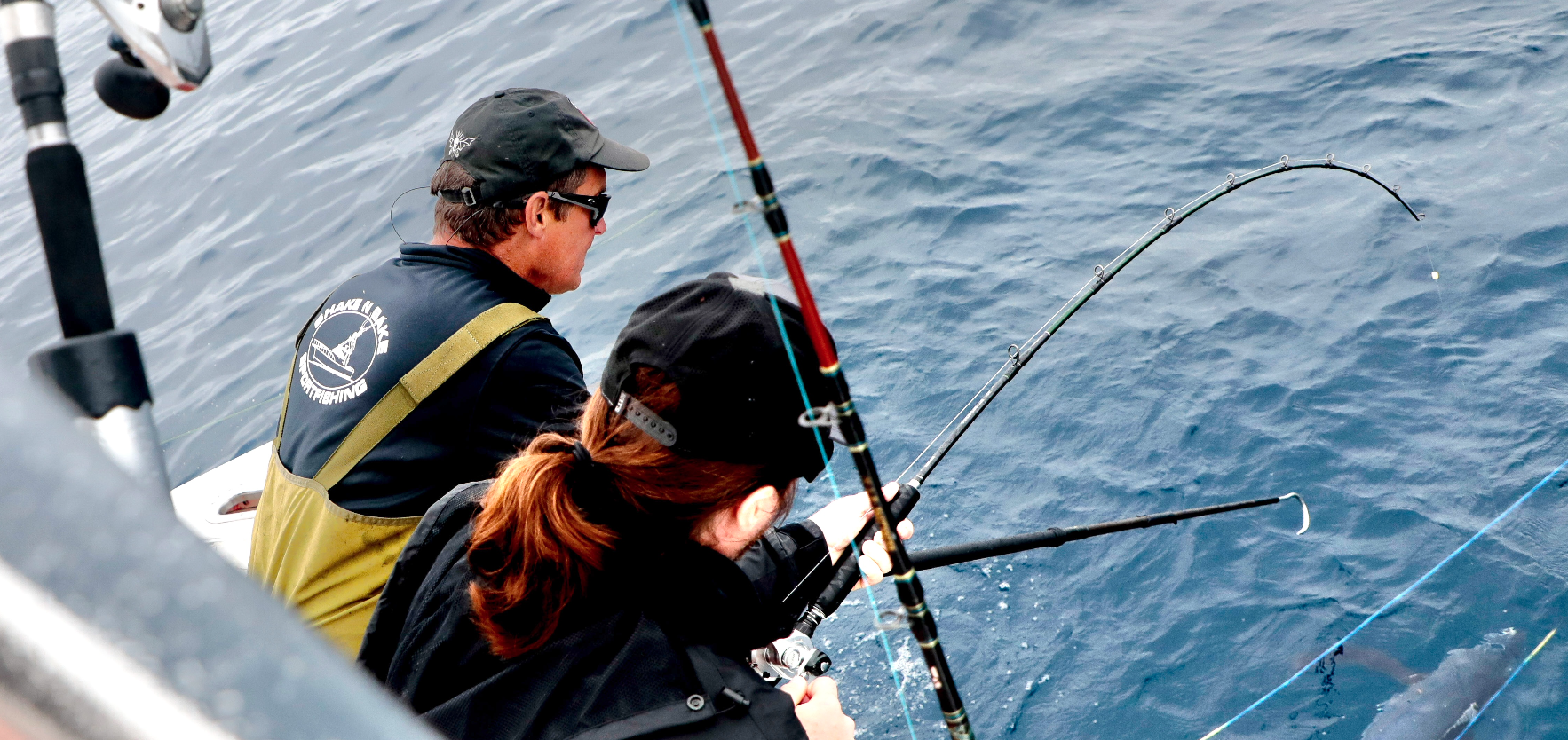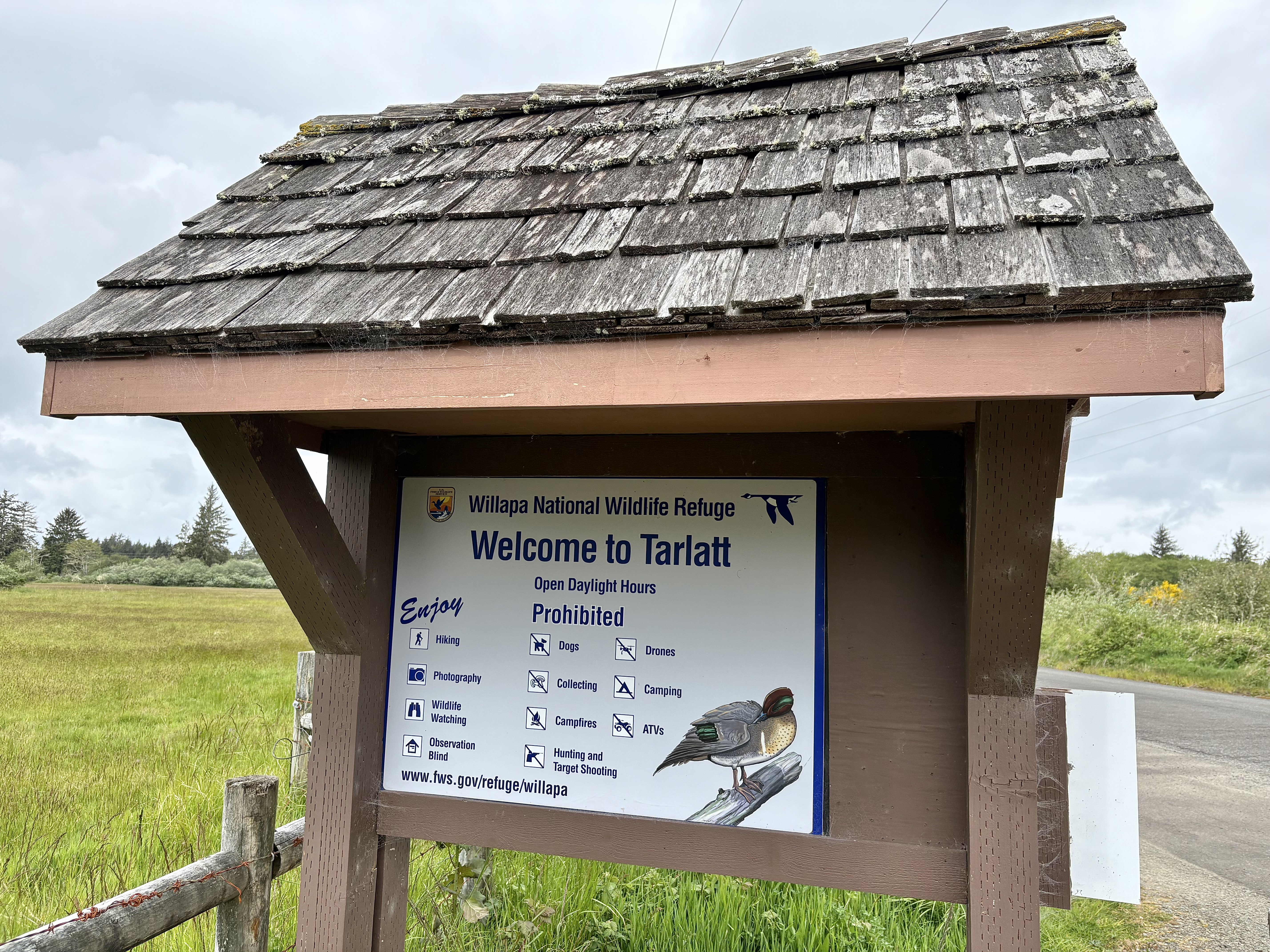Northwest Nature Log: Beware the butcher bird!
Published 11:09 am Tuesday, December 8, 2015

- A shrike perches on a barbed wire to dine on a grasshopper.
The dove gray bird swooped low and fast, leaving his fence post perch, disappearing in the deep grass a few feet away. I saw just enough of the bird to eagerly wait for his return. And up he flew, aware of me but unconcerned: I was still a safe distance away. He resumed his vigil, waiting for insects or even a tiny vole to happen by.
Trending
It was a loggerhead shrike. Shrikes are beautiful small hunters, dove gray with distinctive black facial masks. Their bills have a small but very business-like hook at the tip of the upper mandible. Shrikes are not in the hawk family, and they lack powerful raptor feet and talons to catch prey. Rather, the shrike stuns its prey with a blow from its powerful beak, and often completes the job by impaling the unfortunate insect or small mammal on a sharp object, commonly the barb on a barbed wire fence. Hence the name “butcher bird.”
This macabre larder serves as a food storage area, and also to mark the shrike’s territory. Research has shown that these birds can remember where they have stashed kills for at least eight months. They have no problem snacking on the mummified remains of their old kills.
The first shrike I saw many years ago, was spending the winter near Skagit Flats. I was on a birding trip with an Audubon group and I really didn’t know anyone very well. We pulled up in a bare open area just to scan, and I immediately saw the shrike on a power line. Because I didn’t want to be wrong (just in case it wasn’t a shrike), I didn’t call it. “Northern shrike!” called the woman who followed me out of the van. Dang! Oh well, important lesson learned: stick your neck out and speak up.
Trending
Northern shrikes are seen on the Peninsula during the winter, hanging out on fence posts or treetops where there is a good view of open fields. Loggerhead shrikes look very much like their slightly larger cousins, but the facial markings are slightly different and the soft gray breast is smooth and unmarked.
Loggerhead shrikes are more commonly found east of the Cascades, but at least one loggerhead is spending some time on the Peninsula this fall.
Incidentally, Cindy, the woman who called the bird all those years ago, is a close friend to this day. We struck up a conversation about shrikes and haven’t stopped talking since. We’ve shared new birds in Mexico and England as well as the U.S. since that first shrike. Birding friends are among the very best.









